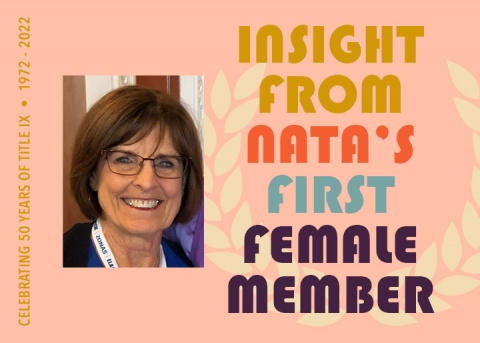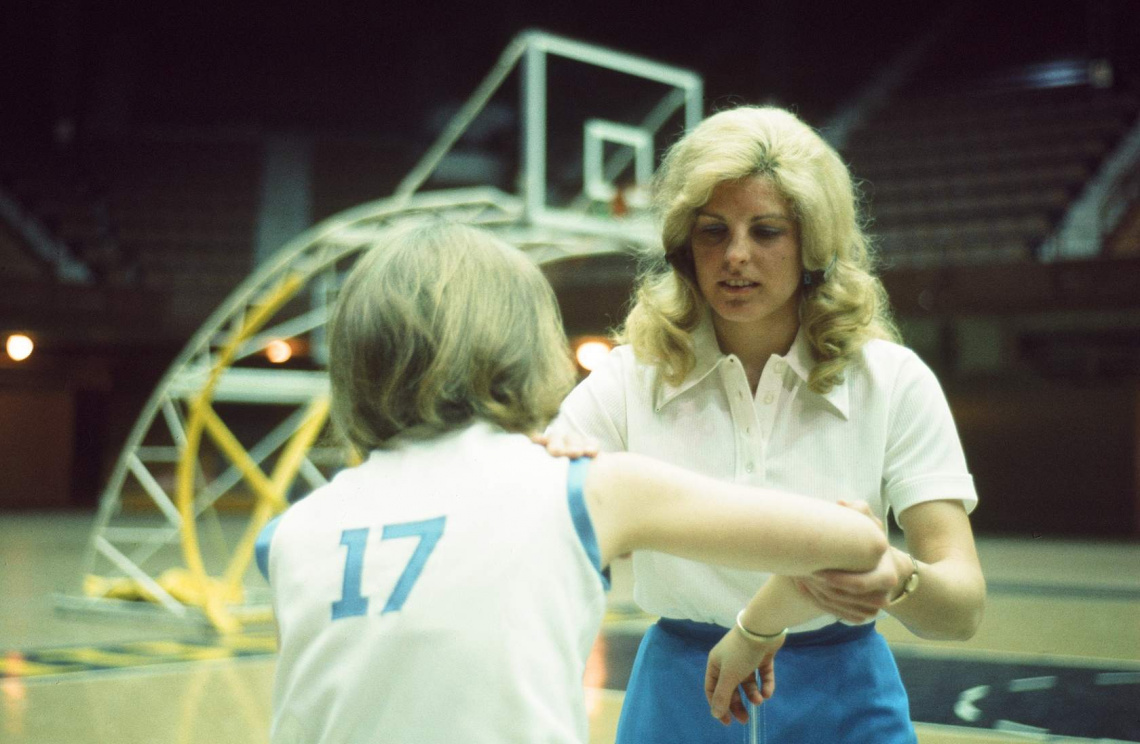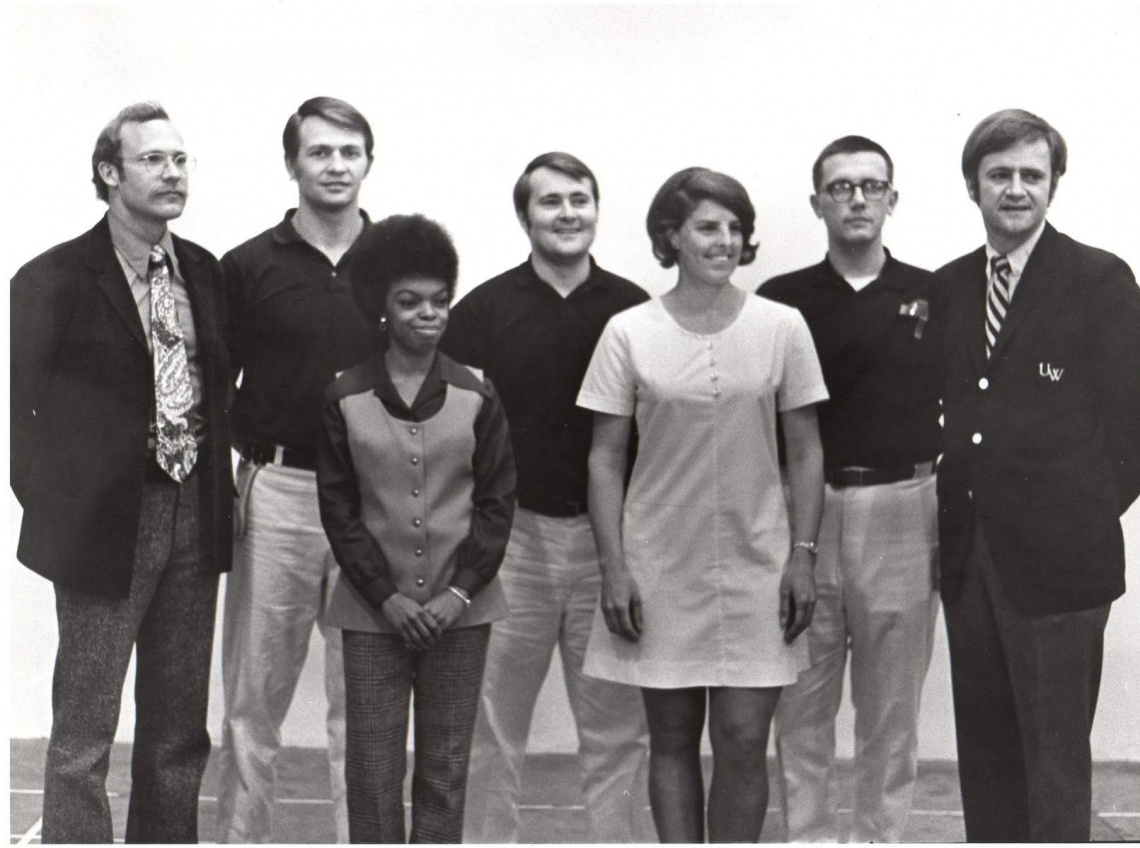
In 2022, NATA is celebrating the 50th anniversary of Title IX, which went into effect June 23, 1972. Starting during Women’s History Month in March leading up to the 73rd NATA Clinical Symposia & AT Expo in June, the NATA Now blog will highlight various legends of the profession and outline the impact Title IX had on them, their careers and the overall athletic training profession.
Sherry Kosek Babagian, AT Ret., a retired athletic trainer in District Eight, has had the unique experiences as a female athletic trainer before Title IX went into effect June 23, 1972, and after it was signed into law. Babagian also shares her experience as the first woman to complete the Care and Prevention class, introducing the athletic training profession and fueling her passion for medical care of female athletes.
Below, Babagian gives a first-person account of her days as an athletic trainer in the pre-Title IX era as well as after.
Pre-Title IX
I began my career in the Pacific Northwest at the University of Washington in Seattle in District Ten. I retired in 2019 after what I would consider a blessed and fruitful career of 54 years.
I entered Southern Illinois University, in Carbondale, as a physical education student athlete competing in swimming and gymnastics. My first introduction to athletic training came courtesy of a gymnastic injury. I received immediate care from the head athletic trainer, but the care was in the hallway because women were not allowed in the athletic training facility. The care I received sparked an interest in me to become an athletic trainer but, at the time, women were also not allowed in the athletic training program. As one not to be denied, I petitioned head athletic trainer Bob Spackman, who granted that petition to allow me to take the Care and Prevention of Athletic Injuries course.
As the first woman to take the care and prevention class, it occurred to me, if I’m the first to take the class, who is taking care of the injured female athletes and why wasn’t I allowed in the athletic training facility when I was injured?
That question became the burning impetus to meet with Spackman again. He recognized my budding passion to care for female athletes. He recommended that I join NATA, which I promptly did, but I soon realized to be taken seriously as a female athletic trainer, I needed to go to physical therapy school. I made it my life's work to learn and progress in both disciplines in order to be the best I could be as both an athletic trainer and physical therapist.
My life as an athletic trainer began before Title IX because I had the good fortune to work with and for Dr. James G. Garrick, assistant orthopedic surgeon and director of sports medicine at the University of Washington. He sought me out at the NATA national convention in 1970 in Denver. He saw what I saw, that female athletes should receive the same excellent care that male athletes were getting. This was two years prior to the passing and implementation of Title IX. In a word, he was a “visionary.”

Inception of Title IX
With the inception of Title IX, facilities were supposed to be equal, but my facility was much too small to approach equal. As a result, to comply with Title IX, our option was to make the men’s athletic training facility co-ed. In that respect, the greatest impact Title IX had on the female athlete was primarily from improved facilities. From the athletic training aspect, Title IX helped both male and female athletic trainers to exchange information in a co-ed setting.
When I began working as an athletic trainer in 1970 at the UW, I was hired after the budget was passed, so part of my salary came from the athletic department and the other part from the student health center. I treated all the university students who were referred to me for physical therapy. I also worked with all the female athletes, covered practices and home and away games. Still, I was not allowed in the men’s athletic training room, however my tiny training room was coed! As a result, Title IX had less impact on me than it did on most female athletic trainers and athletes back then.

Reflecting on Title IX Impact
Looking back on my early years, I was fortunate to work with progressive male counterparts at the University of Washington. They made the transition to a co-ed athletic training facility in 1974-75 seamless, welcoming us women into the fold with professionalism and respect. As the first woman to take the certification exam, I have seen NATA go from a female membership of one – me – to a majority of women members. Title IX was a civil rights law to prohibit sex-based discrimination. It may have opened some doors and improved facilities for some women, but the female athletic trainers who I know that broke the glass ceiling were women who believed in other women, and felt that female athletes deserved better care for their athletic injuries. Now, we have qualified women advancing in the field, in part due to what Title IX brought to the table 50 years ago, but there is still a long way to go.
Read Sherry Kosek Babagian’s full memoir, written by Sherry and Gary Vitti, AT Ret., during the 73rd NATA Clinical Symposia & AT Expo June 28-July 1 in Philadelphia.





